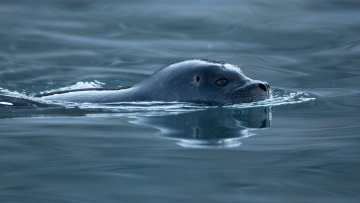681223_Ear Protection_360 px width.jpg

The hearing of marine mammals, such as the harbor seal, is at risk due to the loud sounds of offshore wind farm construction. Credit: AWeith, CC BY-SA 4.0.
Nobody likes the booms and cracks of pile drivers and airguns. They’re not only aggravating, but they can cause hearing loss and other health problems. So there are laws and regulations to control how those tools can be used.
There are similar regulations to protect the ears of marine mammals in offshore construction zones. The noise is an extra problem in the oceans because sound carries a lot farther underwater than in the air.
A recent study says the regulations might need to be updated. The hearing of some mammals is more sensitive than suggested by earlier studies. That could have an impact on the construction of offshore wind farms.
Current regulations in the United States and Europe were based on tests conducted before 2015. But there were only a few experiments to consider. Since then, scientists have conducted many more tests, especially with harbor seals and harbor porpoises. The results show that the seals are more sensitive to low frequencies, while the porpoises are more sensitive to high frequencies than thought. That means they’re more likely to be harmed by equipment that produces quick, loud sounds.
That’s a big problem in Europe. It’s planning to increase its capacity from offshore turbines by a factor of more than five by the end of the decade, and get started on much more. That means thousands of new turbines. So the study suggested it might be time to update noise regulations—better protecting the hearing of the seals, porpoises, and other mammals.

